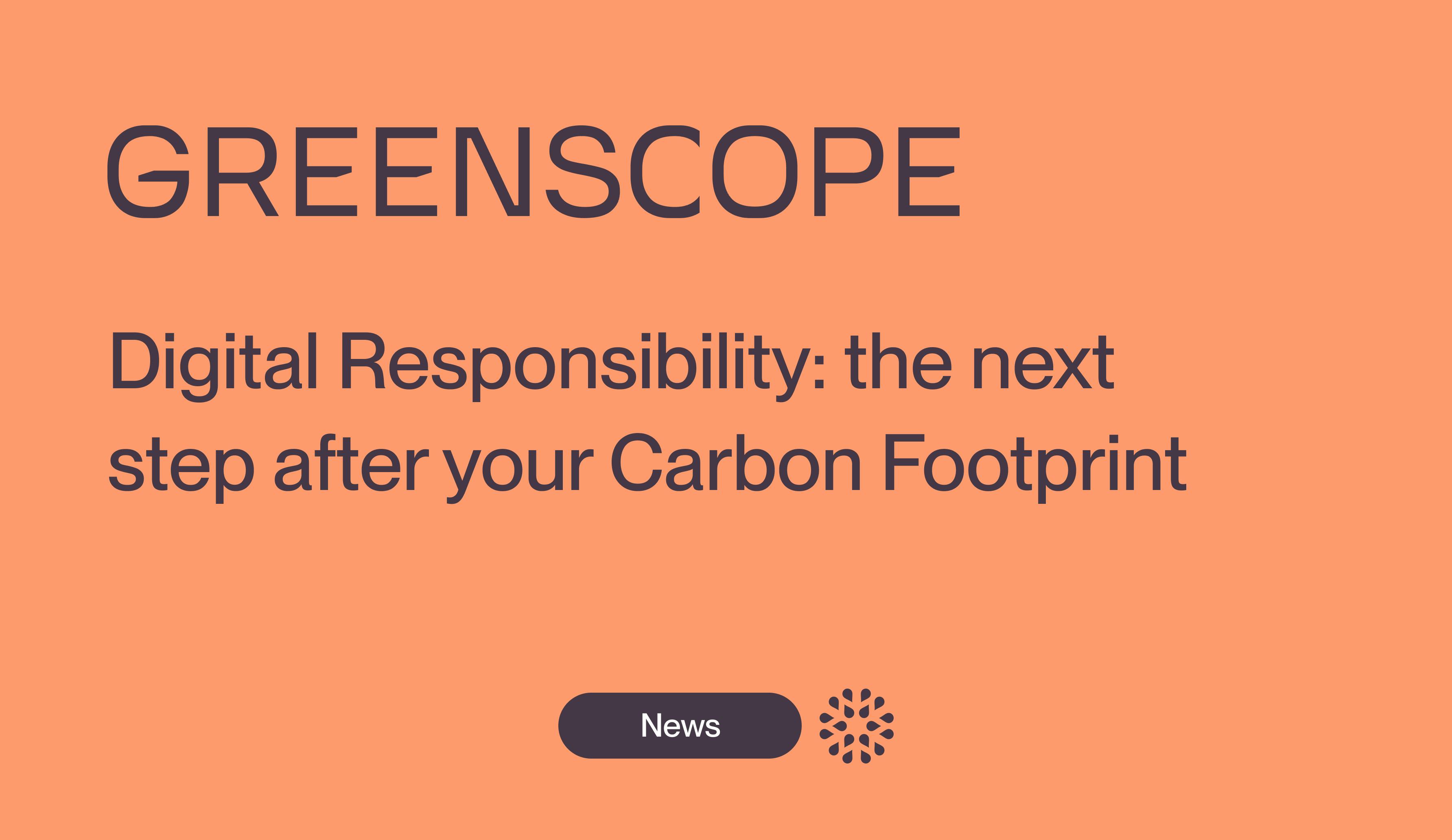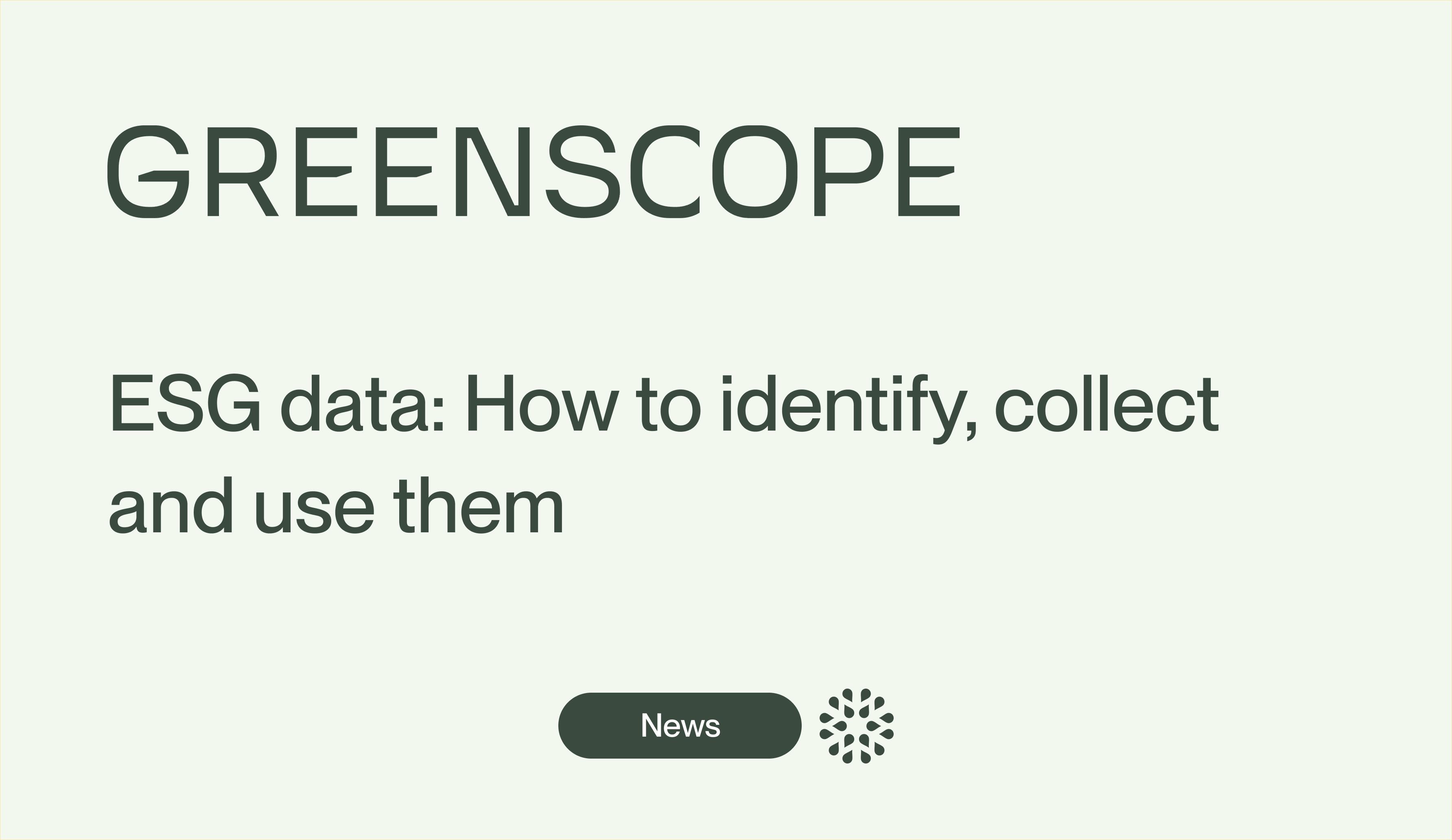Responsible Digital: the next step after your Carbon Footprint assessment
Understand the importance of implementing a responsible digital approach after completing your carbon footprint assessment

The carbon footprint is a tool to help understand the impact of digital. It represents the first essential step in any decarbonization strategy, allowing for the measurement of a company's greenhouse gas (GHG) emissions and encouraging the implementation of action plans to reduce its impact.
Once this assessment is completed, it allows a company to realize the role of digital and IT in its footprint, which is often much higher than expected. Thus, companies are becoming increasingly aware of the need to adopt a digital sobriety approach to reduce their economic, social, and environmental impacts related to their digital usage.
What is Responsible Digital?
Responsible Digital (RD) is an approach aimed at reducing the environmental and social impact of using digital tools and supports a more sustainable use. It is based on a set of best practices that foster the reduction of a company's digital activities' footprint and encourage ecological transition by influencing society.
The RD approach takes into account resource optimization (IT and infrastructure), carbon footprint reduction, eco-design of digital services, and also raising awareness among employees about their own impact.
In 2022, digital accounted for 4.4% of global GHG emissions (source: ADEME). This growing impact is partly due to the manufacturing of equipment, considering the extraction of rare materials essential for designing technological tools. It is also exacerbated by the operation of IT infrastructures, which are particularly water and energy-intensive. Moreover, the development of artificial intelligence (AI) in our processes leads to intensive use of these infrastructures, thereby contributing to the increase in emissions linked to digital.
Furthermore, digital promotes social inequalities and usage conflicts, particularly in terms of digital exclusion for users with disabilities or those affected by digital illiteracy.
Thus, by integrating RD principles, a company moves towards a more ethical and sustainable transformation and aligns its digital objectives with sustainable development goals.
How to initiate your Responsible Digital approach?
After evaluating its environmental and social impact related to digital usage, it is necessary to implement a responsible digital approach based on sustainable, ethical, and inclusive practices.
Tips and best practices for an effective responsible digital approach
A decarbonization strategy must be considered in order to establish a concrete action plan based on the company's objectives. To ensure the successful implementation of this transition, it is important to allocate the necessary resources and to:
- Establish appropriate governance by appointing at least one representative who guides decisions and develops NR roadmaps
- Conduct a more in-depth audit of the carbon footprint and IT performance to assess the future in the short, medium, and long term and identify areas for improvement
- Raise awareness of initial best practices within the organization, identifying major action levers and raising awareness among employees
In this way, the company ensures a structured NR approach and promotes its transition by aiming for continuous improvement.
Focus on responsible digital tools
To adopt this sustainable approach and best manage your transition, existing tools, such as Fruggr, can be used. This type of solution not only simplifies your processes but also offers improvement angles. They provide access to:
- An automated multi-criteria assessment to obtain a comprehensive view of the environmental, social, and economic footprint of your IT
- Reliable KPIs to feed into your ESG and CSR reports, thereby actively participating in the development of your company's overall carbon footprint
- Identification of main emission sources and improvement levers to strengthen your decarbonization
- Guidance for eco-designing and optimizing your digital services by identifying areas for improvement through a lifecycle analysis (LCA) and enhancing the accessibility of your services
- Awareness and engagement of your employees through detailed analyses, training, and recommendations on best practices in NR and CSR
Thus, digital impact assessment tools play an essential role in managing your digital approach and implementing best practices. Their adoption marks a first step towards a more sustainable, ethical, and sober use of digital technology. Solutions like Fruggr enable companies to conduct a digital carbon footprint assessment, providing an overview of their footprint and the necessary KPIs to create the carbon footprint report and effectively manage their decarbonization strategy.
The tangible benefits of Responsible Digital technology for the company
Deploying a Responsible Digital Approach is essential for reducing a company's digital impact. It is associated with tangible benefits:
- Reducing costs and saving energy: with optimized process management, the establishment of digital hygiene, reduction of unused equipment and unnecessary data storage, and limitation of automatic IT infrastructure renewal
- Improving IT performance: through better accessibility, enhanced cybersecurity, optimal user experience, more efficient and faster digital services to maximize your audience
- Ensuring regulatory compliance and improving brand image: by complying with current laws, anticipating future regulations, and thus avoiding sanctions or damage to brand image
- Support your CSR approach and stand out from the competition: by meeting CSR objectives and optimizing business processes to encourage innovation by improving services and promoting job creation. This is thus an opportunity to differentiate from the competition and attract new clients.
- Obtain recognition through labels and certifications: to meet all stakeholder expectations and demonstrate the implementation of a demanding responsible digital approach and ensure services/products through recognized distinctions
In this way, the Responsible Digital approach is the logical continuation of the carbon footprint report. This approach enables companies to meet digital challenges. Indeed, it is the essential step to control and improve the impact of digital uses while benefiting from the advantages it provides, whether financial, social or regulatory.
Our latest articles

Responsible Digital: the next step after your Carbon Footprint assessment
Understand the importance of implementing a responsible digital approach after completing your carbon footprint assessment

CSR News - April 2025
Discover the key developments: ongoing projects, standards updates, new official documents.

ESG Data: How to identify, collect, and use them
Learn how to structure your ESG data to better drive your commitments and enhance your sustainable performance

Guide on ESG performance: definition, measurement, and impact on business
ESG performance, a driving force for responsible growth: follow our guide to understand everything in just a few minutes



